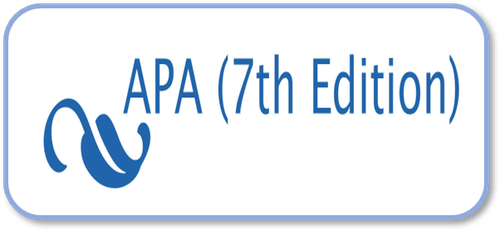Testing Travel Intention Model: An Empirical Study of Borobudur Temple
DOI:
https://doi.org/10.24912/jm.v24i2.654Abstract
This research aims to test the travel intention model that includes several main variables in predicting travel intention. Specifically, Borobudur temple was used to test the model because the temple was one of world heritage. Respondents were chosen by judgemental sampling and the sample size was 240. This research applied structural equation modelling to test research hypotheses. All research hypotheses were supported by data. This manuscript provide the literature review along with the development of hypotheses, research method, results and discussion, and research limitations and conclusion.
References
Abubakar, A. M., and Ilkan, M. (2016). Impact of Online WOM on Destination Trust and Intention to Travel: A Medical Tourism Perspective. Journal of Destination Marketing and Management. https://doi.org/10.1016/j.jdmm.2015.12.005.
Abubakar, A. M., Ilkan, M., Meshall Al-Tal, R., and Eluwole, K. K. (2017). eWOM, Revisit Intention, Destination Trust and Gender. Journal of Hospitality and Tourism Management. https://doi.org/10.1016/j.jhtm.2016.12.005.
Ahn, T., Ekinci, Y., and Li, G. (2013). Self-Congruence, Functional Congruence, and Destination Choice. Journal of Business Research. https://doi.org/10.1016/j.jbusres.2011.09.009.
Andeas, D. (2010). Why Did The chicken browse the social media. Jakarta: PT Elex Media Komputindo.
Assaker, G., Vinzi, V. E., and O’Connor, P. (2011). Examining the Effect of Novelty Seeking, Satisfaction, and Destination Image on Tourists’ Return Pattern: A two factor, non-linear Latent Growth Model. Tourism Management. https://doi.org/10.1016/j.tourman.2010.08.004.
Chen, Y. C., Shang, R. A., and Li, M. J. (2014). The Effects of Perceived Relevance of Travel Blogs’ Content On The Behavioral Intention To Visit A Tourist Destination. Computers in Human Behavior. https://doi.org/10.1016/j.chb.2013.05.019.
Croy, G. (2014). Teaching Tourism, Image and Media Relationships. International Tourism and Media Conference. Retrieved from http://www.buseco.monash.edu.au/units/tru/staff/croy.
Di Pietro, L.; Di Virgilio, F.; Pantano, E. (2012). Social network for the choice of tourist destination: Attitude and behavioural intention. J. Hosp. Tour. Technol. 3, 60–76.
Hawkins, D. I., and Mothersbaugh, D. L. (2010). Consumer Behavior: Building Marketing Strategy. Publish. Retrieved from http://www.amazon.com/dp/0072416882. In Publish.
Hidayat, T. T. N., Chalil, dan Sutomo, M. (2017). Pengaruh Aksesibilitas dan Citra Destinasi Terhadap Niat Berkunjung Kembali ke Telaga Tambing. Jurnal Ilmu Manajemen Universitas Tadulako, 3(2), 201–212.
Isa, S. M., and Ramli, L. (2014). Factors Influencing Tourist Visitation in Marine Tourism: Lessons learned from FRI Aquarium Penang, Malaysia. International Journal of Culture, Tourism, and Hospitality Research. https://doi.org/10.1108/IJCTHR-04-2013-0016.
Ishida, K., Slevitch, L., and Siamionava, K. (2016). The Effects of Traditional and Electronic Word-of-Mouth on Destination Image: A Case of Vacation Tourists Visiting Branson, Missouri. Administrative Sciences. https://doi.org/10.3390/admsci6040012.
Jalilvand, M. R., and Samiei, N. (2012). The Impact of Electronic Word of Mouth on A Tourism Destination Choice: Testing The Theory of Planned Behavior (TPB). Internet Research. https://doi.org/10.1108/10662241211271563.
Jalilvand, M. R., Ebrahimi, A., and Samiei, N. (2013). Electronic Word of Mouth Effects on Tourists’ Attitudes Toward Islamic Destinations and Travel Intention: An Empirical Study in Iran. Procedia - Social and Behavioral Sciences. https://doi.org/10.1016/j.sbspro.2013.06.465.
Jalilvand, M. R., Esfahani, S. S., and Samiei, N. (2011). Electronic Word-Of-Mouth: Challenges and Opportunities. Procedia Computer Science. https://doi.org/10.1016/j.procs.2010.12.008.
Kock, N., and Hadaya, P. (2018). Minimum sample size estimation in PLS‐SEM: The inverse square root and gamma‐exponential methods. Information Systems Journal, 28(1), 227–261.
Ladhari, R., and Michaud, M. (2015). EWOM Effects on Hotel Booking Intentions, Attitudes, Trust, and Website Perceptions. International Journal of Hospitality Management. https://doi.org/10.1016/j.ijhm.2015.01.010.
Lamba, B., and Agarwal, M. (2014).A study on influence of eWOM: Consumer buying behaviour. The International Journal of Business & Management, 2(4):237-241.
Mahpour, A., Mamdoohi, A., HosseinRashidi, T., Schmid, B., and Axhausen, K. W. (2018). Shopping Destination Choice in Tehran: An Integrated Choice and Latent Variable Approach. Transportation Research Part F: Traffic Psychology and Behaviour. https://doi.org/10.1016/j.trf.2018.06.045.
Mehmood, S., Liang, C., and Gu, D. (2018). Heritage Image And Attitudes Toward A Heritage Site: Do They Really Mediate The Relationship Between User-Generated Content And Travel Intentions Toward A Heritage Site? Sustainability (Switzerland). https://doi.org/10.3390/su10124403.
Nassar, M. A., Mostafa, M. M., and Reisinger, Y. (2015). Factors Influencing Travel to Islamic Destinations: An Empirical Analysis of Kuwaiti Nationals. International Journal of Culture, Tourism, and Hospitality Research. https://doi.org/10.1108/IJCTHR-10-2014-0088.
O’Connor, P. (2010). Managing a hotel’s image on Tripadvisor. Journal of Hospitality Marketing and Management. https://doi.org/10.1080/19368623.2010.508007.
Phau, I., Shanka, T., and Dhayan, N. (2010). Destination Image and Choice Intention of University Student Travellers to Mauritius. International Journal of Contemporary Hospitality Management. https://doi.org/10.1108/09596111011053846.
Pratiwi, Y. R. (2017). Pengaruh Word of Mouth Communication terhadap Keputusan Pembelian Konsumen Pada Boardgame Lounge Smart Cafe Pekanbaru. Jom Fisip, 4(1), 1–15.
Pratminingsih, S. (2014). Roles of Motivation and Destination Image in Predicting Tourist Revisit Intention: A Case of Bandung – Indonesia. International Journal of Innovation, Management and Technology, 5(1). https://doi.org/10.7763/ijimt.2014.v5.479
Radzi, C. W. J. B. W. M., Hui, H., Mohamed, N. A. B., and Jenatabadi, H. S. (2017). Family Food Security and Children’s Environment: A Comprehensive Analysis With Structural Equation Modeling. Sustainability (Switzerland). https://doi.org/10.3390/su9071220.
Reza Jalilvand, M., Samiei, N., Dini, B., and Yaghoubi Manzari, P. (2012). Examining The Structural Relationships Of Electronic Word Of Mouth, Destination Image, Tourist Attitude Toward Destination And Travel Intention: An Integrated Approach. Journal of Destination Marketing and Management. https://doi.org/10.1016/j.jdmm.2012.10.001.
Ruslan, R. (2014). Manajemen Public Relations dan Komunikasi. In Manajemen Public Relations & Media Komunikasi.
Saeedi, H., and Heidarzadeh Hanzaee, K. (2018). The Effects Of Heritage Image On Destination Branding: An Iranian Perspective. Journal of Heritage Tourism. https://doi.org/10.1080/1743873X.2016.1264958.
Setiawan, P. Y., Troena, E. A., Armanu, and Noermijati. (2014). The Effect of e-WOM on Destination Image, Satisfaction and Loyalty. International Journal of Business and Management Invention.
Tan, W. K. (2017). Repeat visitation: A Study from the Perspective of Leisure Constraint, Tourist Experience, Destination Images, and Experiential Familiarity. Journal of Destination Marketing and Management. https://doi.org/10.1016/j.jdmm.2016.04.003.
Tussyadiah, I. P., Wang, D., Jung, T. H., and tom Dieck, M. C. (2018). Virtual Reality, Presence, and Attitude Change: Empirical Evidence from Tourism. Tourism Management. https://doi.org/10.1016/j.tourman.2017.12.003.
Vermeulen, I. E., and Seegers, D. (2009). Tried and tested: The Impact of Online Hotel Reviews on Consumer Consideration. Tourism Management. https://doi.org/10.1016/j.tourman.2008.04.008.
Whang, H., Yong, S., and Ko, E. (2016). Pop Culture, Destination Images, and Visit Intentions: Theory and Research on Travel Motivations of Chinese and Russian Tourists. Journal of Business Research. https://doi.org/10.1016/j.jbusres.2015.06.020.
Wolf, E. J., Harrington, K. M., Clark, S. L., and Miller, M. W. (2013). Sample Size Requirements for Structural Equation Models: An Evaluation of Power, Bias, and Solution Propriety. Educational and Psychological Measurement. https://doi.org/10.1177/0013164413495237.
Wu, C. W. (2015). Foreign Tourists’ Intentions in Visiting Leisure Farms. Journal of Business Research. https://doi.org/10.1016/j.jbusres.2014.11.024.
Zarrad H, and Debabi M. (2015). Analyzing the Effect of Electronic Word of Mouth on Tourists’ attitude toward Destination and Travel Intention. International Research Journal of Social Sciences.
Downloads
Published
How to Cite
Issue
Section
License
Copyright (c) 2020 Jurnal Manajemen

This work is licensed under a Creative Commons Attribution-NonCommercial-ShareAlike 4.0 International License.
This journal provides immediate open access to its content on the principle that making research freely available to the public supports a greater global exchange of knowledge.

This work is licensed under a Creative Commons Attribution-NonCommercial-ShareAlike 4.0 International License



















